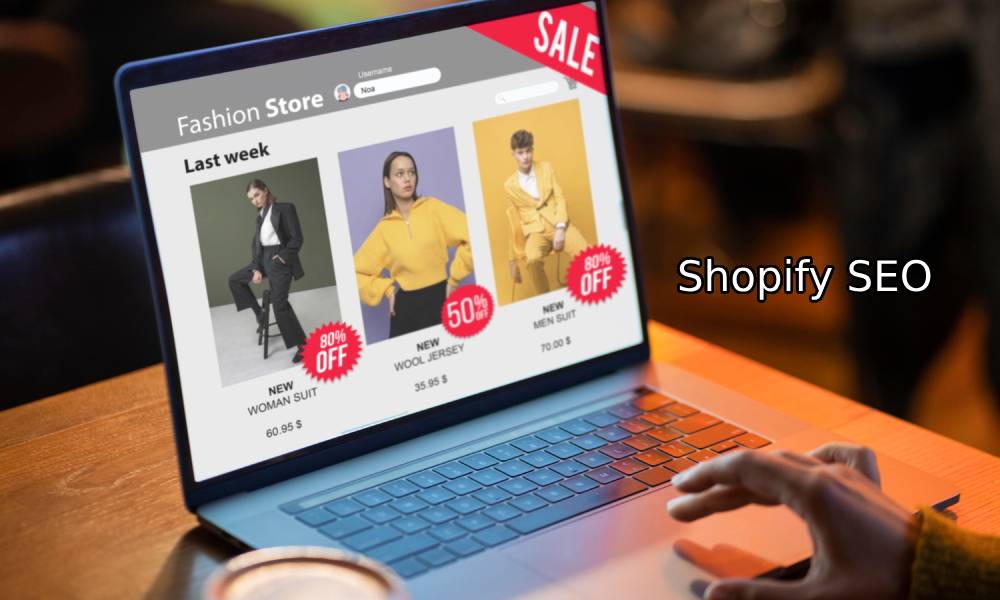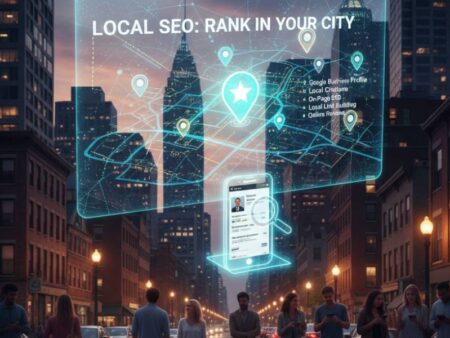
So, you’ve started a Shopify store. Congrats! Whether you’re selling handmade candles, trendy phone cases, or drop-shipping alpaca socks (yes, it’s a thing), there’s one thing every Shopify store owner eventually runs into: “How do I get people to actually find my store?”
The answer? SEO—Search Engine Optimization.
Now before you click away because “SEO sounds too techy” or “I hate dealing with Google,” chill. I got you. We’re going to break it down like you’re chatting with a friend over coffee. No jargon, no fluff, just real tips that work on Shopify.
Wait, What Even Is SEO?
Let’s start with the basics.
SEO is how you get your store to show up in search engines (mainly Google) when people type in stuff like:
- “Best vegan skincare products”
- “Minimalist leather wallets”
- “Funny coffee mugs for coworkers”
You want your Shopify store (or at least your products) to pop up in those results. Why? Because that’s FREE traffic. Organic traffic. People who are already looking for what you’re selling.
And Shopify makes it easier than you think. It just takes some effort and a bit of know-how.
Step 1: Start with Keywords (AKA What People Type into Google)
Let’s say you sell handmade soy candles.
You might think your customer is Googling “Handcrafted soy wax candles with essential oils,” but chances are, they’re typing something like:
- “Best scented candles online”
- “Eco-friendly candles”
- “Soy candles gift set”
So how do you figure out what real people are actually typing?
Here’s how:
- Use Google autocomplete. Just type a product idea into Google and see what it suggests.
- Try Ubersuggest or Ahrefs (free tools).
- Use Shopify’s built-in Search Terms (from your Analytics dashboard).
- Spy on competitors and check what keywords they rank for using tools like SEMrush or Moz.
Once you’ve got your list of keywords, choose one main keyword per product or page. Don’t stuff. Just keep it focused.
Step 2: Optimize Your Product Pages (The Right Way)
Okay, so you’ve got your keywords. Now it’s time to sprinkle that SEO magic into your store.
Here’s what to do, step by step:
1. Title Tags & Meta Descriptions
These are what show up on Google.
- Your title tag should include your main keyword and sound natural.
- Example: “Eco-Friendly Soy Candles – Hand-Poured & Scented”
- Example: “Eco-Friendly Soy Candles – Hand-Poured & Scented”
- Your meta description should be a short, catchy pitch. Keep it under 160 characters and include your keyword.
You can edit these in Shopify under Online Store > Pages or in the product editor (scroll down to Search engine listing preview).
2. Product Titles
Make your product titles clear and keyword-friendly.
- Bad: “Lavender”
- Better: “Lavender Soy Candle – Calming Scent, 100% Vegan Wax”
3. Product Descriptions
Use natural language, include your keyword a few times, and actually sell the item.
Talk about:
- The scent, feel, materials
- Who it’s perfect for
- How it’s made
- Shipping details or return policy
Don’t forget to use bullet points. People love to scan.
Step 3: Optimize Your Images (Yep, That Matters)
Shopify stores are visually driven, but search engines can’t see pictures. They read file names and alt text.
Do this:
- Rename your image files before uploading. Instead of IMG1234.jpg, name it lavender-soy-candle.jpg.
- Add alt text (alternative text) for each image. This helps with SEO and makes your site accessible for screen readers.
Example alt text: “Lavender soy candle in glass jar with wooden lid”
Bonus tip: Keep image sizes small so your site loads faster. Speed = SEO love.
Step 4: Improve Site Speed
Google loves fast websites. And Shopify stores, while decent, can slow down if you’re not careful.
Tips to speed things up:
- Use compressed images (TinyPNG or Shopify’s built-in compression).
- Avoid too many apps that run in the background.
- Use a lightweight, clean Shopify theme (like “Dawn” or “Minimal”).
- Limit popups, auto-play videos, and fancy sliders.
You can check your store’s speed using Google’s PageSpeed Insights.
Step 5: Structure Your Store Smartly
Think of your store like a house. Google’s the guest, and it wants a nice, easy-to-navigate tour.
Here’s a good SEO-friendly store structure:
Home
├── Shop All
├── Collections (e.g., Soy Candles, Gift Sets)
│ ├── Product 1
│ ├── Product 2
├── About Us
├── Blog
└── Contact
Use clear navigation menus. Don’t bury your products five clicks deep.
Create collection pages and optimize them too (with unique descriptions, not just product links).
Step 6: Blog Like a Real Human (That’s You)
Yes, blogging works—even for eCommerce.
You don’t need to write essays. Just helpful, search-friendly posts that attract your ideal customers.
Ideas:
- “How to Choose the Right Candle for Your Mood”
- “Top 5 Gifts for Candle Lovers (That Aren’t Boring)”
- “Why Soy Wax is Better Than Paraffin (Spoiler: It’s Safer & Cleaner)”
Include keywords naturally, link to your products, and use headings (H2, H3) to break it up.
Post regularly—once a week or even once a month is great.
Step 7: Mobile Optimization Is Non-Negotiable
Most Shopify shoppers are on their phones. If your site isn’t mobile-friendly, you’re toast.
Luckily, Shopify themes are already responsive. But double-check with this checklist:
- Buttons are easy to tap
- Text is big enough
- Images don’t take forever to load
- Popups are easy to close
Use Google’s Mobile-Friendly Test to spot issues.
Step 8: Use Internal Linking (Gently)
Google likes when you help it crawl your site.
How? By linking pages together.
- In your blog posts, link to products or collections.
- On product pages, link to related items (e.g., “Check out our Coconut Candle too!”).
- In your About page, link to your best-sellers.
Just don’t overdo it. Link only when it makes sense.
Step 9: Install Some Helpful SEO Apps
Shopify has apps that make SEO easier, but don’t get app-happy. Choose a couple solid ones:
Recommended apps:
- Plug In SEO – Great for beginners. Scans your site for SEO issues.
- Image Optimizer by Booster Apps – Compresses and renames images.
- Smart SEO – Helps generate meta tags and structured data (like schema markup).
Most have free versions to start with.
Step 10: Get Backlinks (Optional, But Powerful)
Backlinks = other websites linking to your store.
They’re like votes of confidence in the eyes of Google. More good backlinks = better rankings.
Easy backlink ideas:
- Reach out to bloggers or influencers for a review or feature.
- Submit your store to niche directories or “Top 10” gift guides.
- Collaborate with other brands for co-promotions or shoutouts.
Just make sure they’re relevant and legit—don’t buy spammy backlinks. Google hates that.
Step 11: Use Google Search Console & Analytics
Okay, I know this part sounds nerdy, but stick with me.
Google Search Console:
- Helps you see what keywords you’re showing up for
- Alerts you to SEO issues
- Let’s you submit your sitemap (Shopify auto-generates one!)
Google Analytics:
- Shows what pages get traffic
- Helps you track conversions
- Tells you what’s working (and what’s not)
Once you connect both to your Shopify store, you’ll feel like a wizard seeing inside your store’s soul.
Bonus: Don’t Forget Local SEO (If You Sell Locally)
If you have a physical store or sell locally, add these:
- Create a Google My Business listing
- Add your address to your site footer
- Use local keywords like “soy candles in Manila” or “eco-friendly gifts Cebu”
This helps you show up in local map results too.
Conclusion
Doing SEO on Shopify isn’t about finding one magic trick. It’s about doing a bunch of small things well, over time. Start with your products. Then improve your images, pages, blog, and speed.
Tweak. Test. Repeat.
And remember, SEO is like planting seeds. It takes time to grow—but once it does, it keeps giving you traffic without paying for ads.
So go light that candle (literally or metaphorically) and get optimizing. You got this!
What Are You Waiting, Enroll Now!
Contact Us!Subscribe to this Page
Average rating 5 / 5. Vote count: 198
Share on Social Media
Related Posts
- What is WordPress SEO? A Beginner’s Guide
- How to Use HARO (Help a Reporter Out) for Backlinks: A Complete Guide
- Website Ranking vs. Traffic: Which Should You Focus On?
- Why White Hat SEO Matters for Long-Term Website Success
- Best SEO Courses for Beginners








